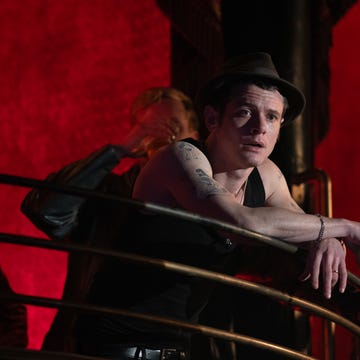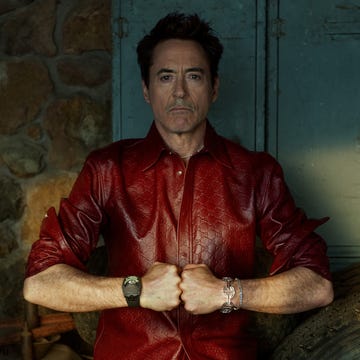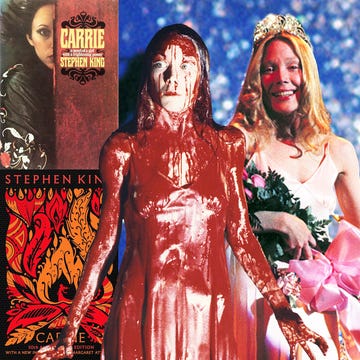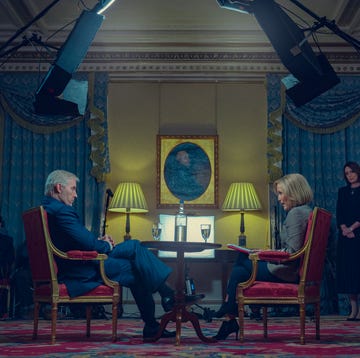Tonnes of rubbish dumped offshore, children standing up to adults in power, political corruption, the scapegoating of society's most vulnerable and even a suspicious poisoning: the metaphors for modern day come thick and fast in Wes Anderson’s new film Isle Of Dogs.
But just as you sit back in your seat and brace yourself for some heavy-handed allegories, a fortune telling pug named Oracle reminds you this is a film primarily out to delight and entertain - and all the better for it.
In the director's second stop-animation feature after 2009's Fantastic Mr. Fox, we're airdropped into the fictional Japanese city of Megasaki 20 years in the future, where the dog population has become infected with an epidemic of snout fever. The corrupt Mayor Kobayashi exiles all canines to the garbage-filled Trash Island where they roam in packs, fight over maggot-infested food and lament the glory days of sleeping on lamb's wool beanbags and chowing down on Puppy Snaps.
One such hound is Spots, the guard dog of 12-year-old Atari who is left in the care of his uncle - the aforementioned Mayor - after his parents died in a bullet train accident. In keeping with Anderson’s love of dysfunctional families and their adventures, Atari sets off for Trash Island in a tiny plane and enlists the help of a pack of pooches to help him find his best friend.
As ever with Anderson, it’s an A-list cast that makes up the human and dog populations. The barks, rendered into English, come from the likes of Bryan Cranston, Liev Schrieber, Bill Murray, Scarlett Johansson, Edward Norton, Greta Gerwig and (a somewhat underused) Harvey Keitel.
It’s also a return to puppetry, the instruments Anderson used for his Roald Dahl adaptation. This production is, somehow, even more meticulous, with 70 of the 670 person crew working on the puppets used to create stop-motion animation, a process which creates the illusion of movement between frames.
Anderson's films have often been described as depicting life inside a dollhouse, and Isle Of Dogs is his most obsessively crafted set so far. It's an entrancing world to travel through. Discarded sake bottles become a colourful den to hide in and cotton-wool is used to show the flurry of fights that burst into life throughout the film. A scene in which the Mayor’s chef prepares some poison-laced sushi is a minor masterpiece of its own.
Anderson's obsession with symmetry, use of colour as a storytelling device and rich visual language have spawned ardent fans of his style and characters, from Margot Tenenbaum’s iconic fur coat to the blossom pink Mendl’s pastry boxes. An obsessive aestheticist, his name has become a way of describing the look of particularly stylish building, inspiring an Instagram account documenting them around the world.
The score, by Alexandre Desplat who this month won an Oscar for The Shape of Water, is also particularly impressive with the hammering of Japanese taiko drums and soft jazz drifting through the scenes.
The film has faced accusations of cultural tourism and appropriation with complaints specifically on Anderson's decision to not subtitle any of the Japanese dialogue and have only the American actors intelligible to most viewers.
It's a criticism that will likely upset Anderson, a long-time fan of Japanese cinema and who explained last month that he and co-writers Roman Coppola and Jason Schwartzman wanted it to be, “something related to our shared love of Japanese cinema, especially Akira Kurosawa. The story could’ve taken place anywhere, but it came together when we realised it should take place in a fantasy version of Japan.”
One of his foremost influences has been Studio Ghibli creator and master animator Hayao Miyazaki who, Anderson says: “brings the detail and also the silences I think. With Miyazaki you get nature and you get moments of peace, a kind of rhythm that is not in the American animation tradition so much. That inspired us quite a lot. We found many places where we had to pull back from what we were doing musically because we wanted the movie to be quiet.”
It's certainly a film that speaks to a love of Japanese cinema and culture, and a quiet melancholy underpins the otherwise hilarious and often dark script. And though there are plenty of moral lessons you could read into the plot - most strikingly the handling of the immigrant crisis by various governments around the world - they are, unlike in Pixar’s more on-the-nose fables, mercifully subtle.
Instead what we're given is a sumptuous visual feast and some light relief in the moving story of a boy looking for his dog. In other words: just the tonic to the real world in 2018.
Isle of Dogs is out in UK cinemas from 30 March













